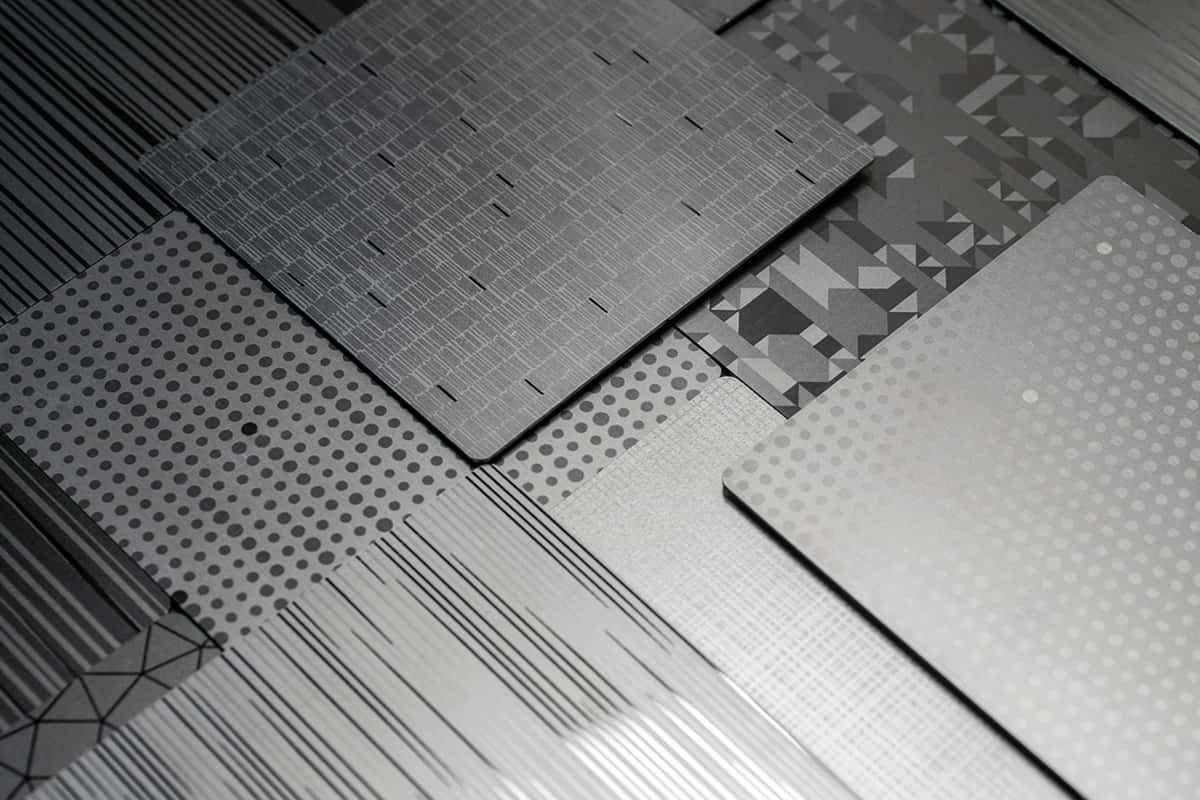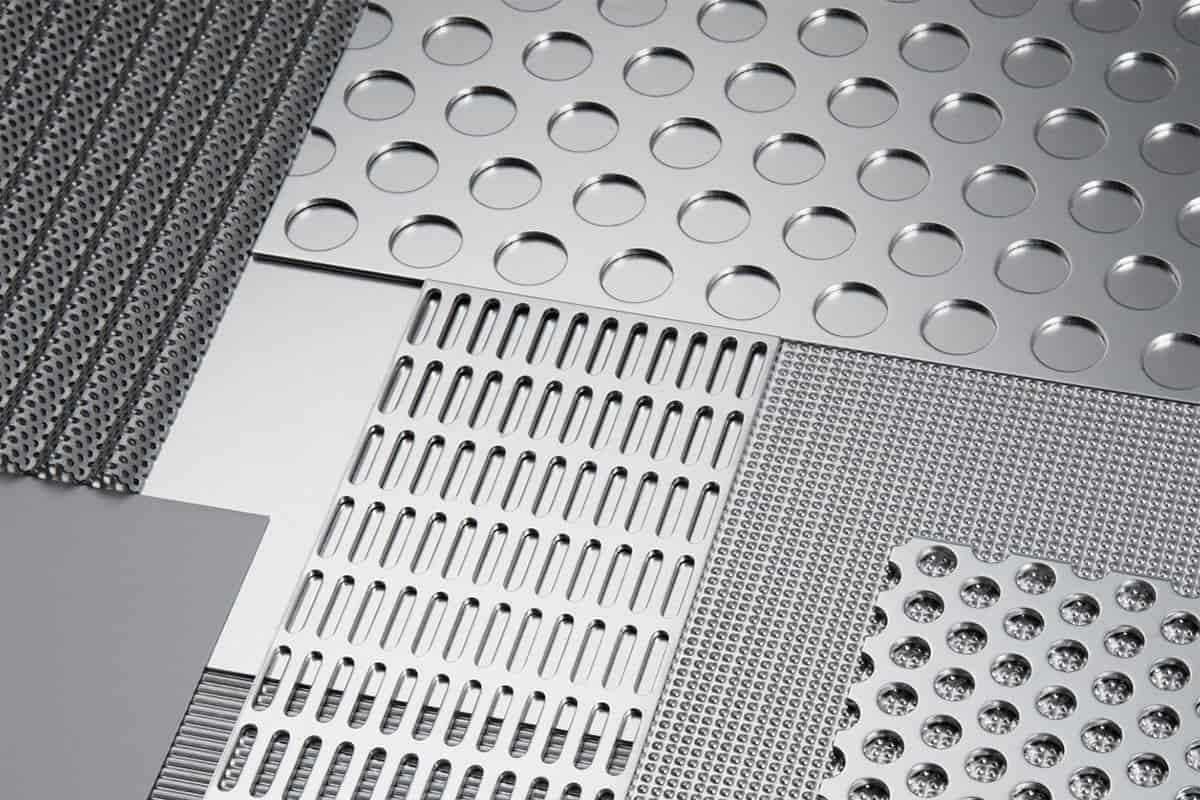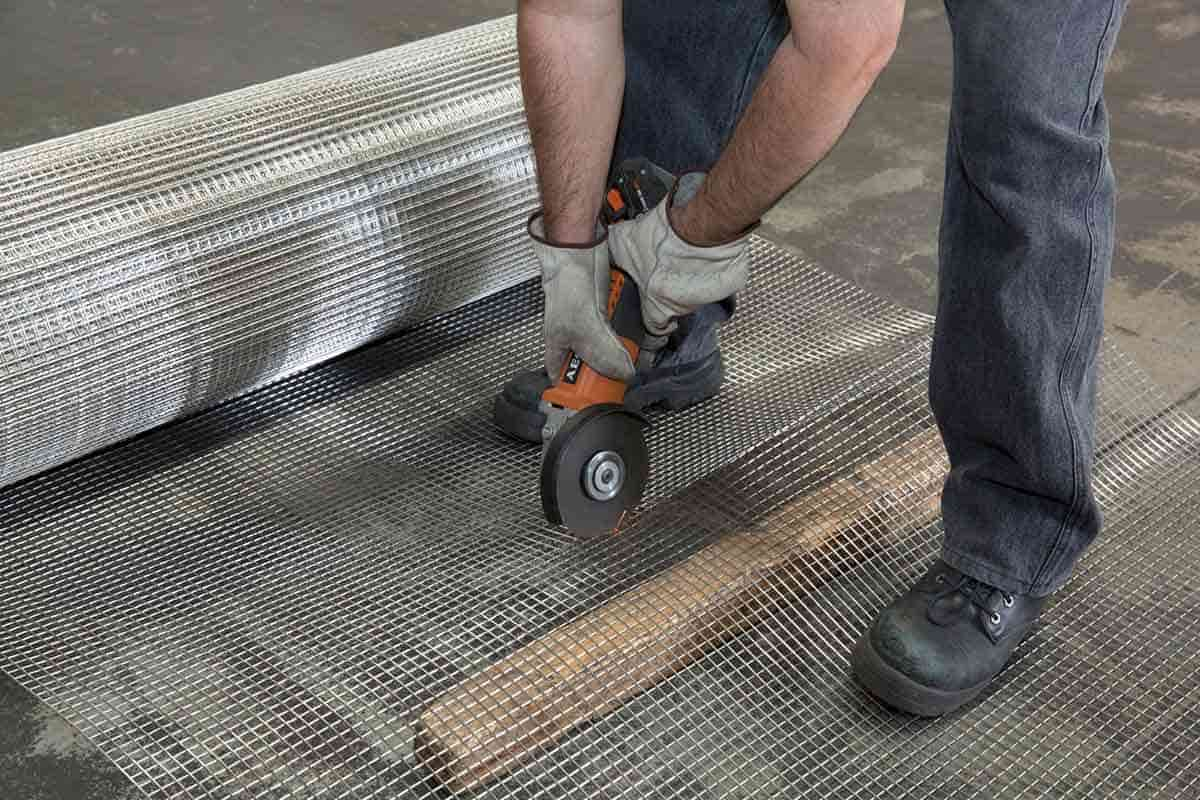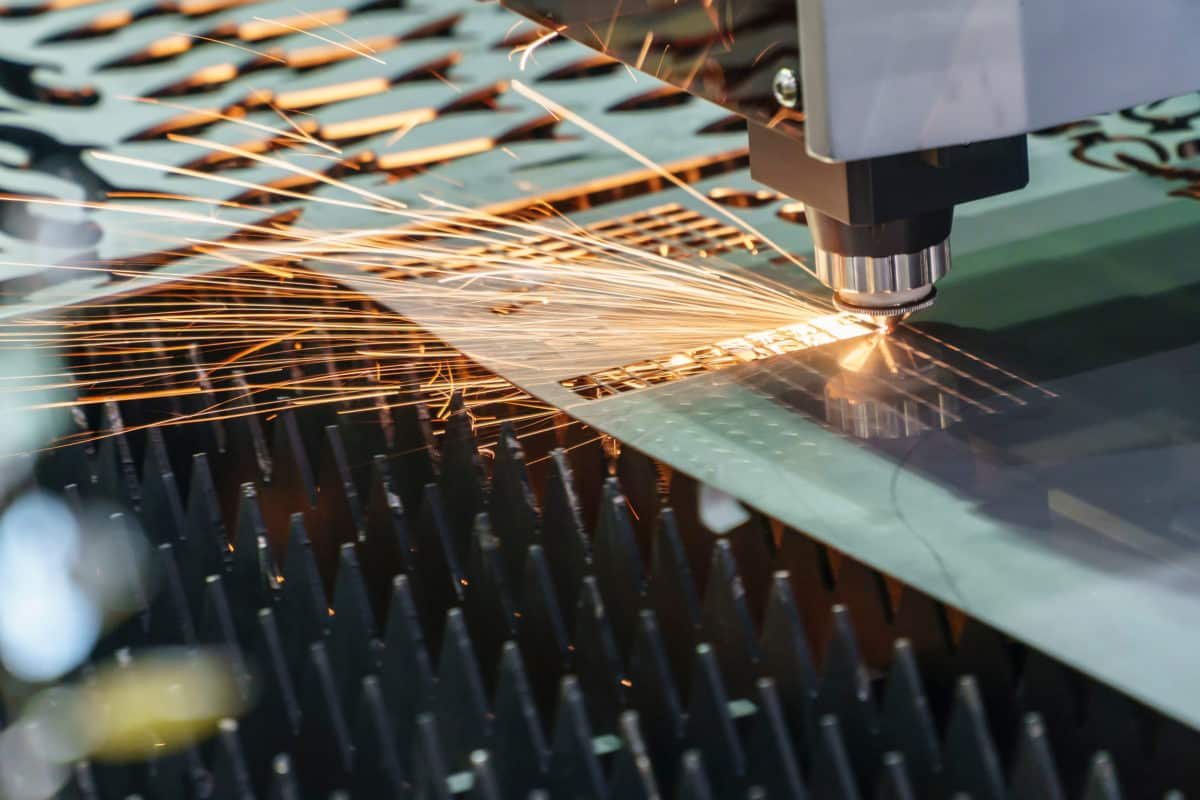To answer the question of how to cut stainless steel sheets to the size we need, we can tell you that there are many different kinds of methods for cutting steel products, especially steel sheets. Types of cutting methods Cutting operations are classified into hot and cold according to cutting temperature conditions. *** Hot cuts This method is fast and suitable for mass production. The mechanization of thermal cutting machines and the ability to cut high-thickness parts are other advantages of this method. Thermal cutting also has its drawbacks, including the ability to change the structure and properties of the metal at the cutting site, produce pollution and harmful gases, and low safety. *** cold cuts
The temperature in this method is usually equal to the ambient temperature and does not result in a significant increase in the temperature of the metal.
The advantages of this cutting method include high speed, no emission of toxic and polluting gases, preservation of metal properties, the ability to cut a variety of shapes, and cost-effectiveness due to low waste. The lack of transportability of the cold cutter is one of the disadvantages of this method. With the cutting blades on circular saws, you can cut steel up to 3.8 inches thick. But you have to be careful because the hot iron shavings from the cutting iron can be spread all over. Put on your safety gear, stay away from shavings, and cover anything you do not want to be damaged by iron shavings. You can also find iron-cutting blades in hardware stores and online hardware stores. There are two types of circular cutting blades: cheap toothed blades and carbide blades that range in price from $ 8 to $ 40. Also, while carbide inserts are more expensive, they last longer.
How To Cut Stainless Steel Sheets
with the information we gave you in the last part you know how to cut stainless steel sheets now. But there are many different ways either. A tool with the right blade or cutting disc can cut almost any type of iron. So, the only thing that matters when cutting is that the blade fits the iron. match the blade to the iron Generally, there are two metals: ferrous and non-ferrous; any metal that contains iron is iron and requires iron blades. For example, steel roofs, rebar, and iron bolts are examples of iron building materials. Most cutting blades and discs are classified for cutting non-ferrous or ferrous metals. Two of the non-ferrous metals to be cut are aluminum and copper, in addition, non-ferrous metals are generally softer than ferrous metals. Smart cutting with a double-sided saw Before getting to know the cutting machine, read the machine's operating instructions carefully and familiarize yourself with the machine's settings to get the most out of the machine for cutting various parts. Here are some points to keep in mind when using a router:
- If you have the option, adjust your saw.
- Extend the life of the saw by keeping the speed of the saw constant.
- Adjust the blades to the desired iron thickness.
- Use double or carbide inserts for longer cutting life.
Iron and non-ferrous metal parts can be cut with a tinplate, but there is an easier way. In this way, the diamond blade is extinguished at the angle of rotation of the unit and used as a saw for cutting or drilling.
Diamond blades capable of cutting metal are recommended, and even many use regular diamond blades for the job. Hand tools are also great because when you use them, with your creativity, you can do things they are not designed for. Black stainless steel sheet matte
Black stainless steel sheet matte
Steel Sheets Cut To Size
steel sheets could be cut into different sizes. Metal sheets are made of different alloys such as aluminum, copper, brass, etc., and are also produced in different percentages. There are two methods of making these products, cold rolling and hot rolling, again the plate made by cold rolling is called an oiled plate, and the product made by hot rolling is called a black plate. There are different types of these two plates, each with unique dimensions, weight, and properties, and are mainly divided into seven categories, including oil plate, galvanized plate, steel plate, color plate, and acid plate. Lay sheets and ribbed sheets. The thickness, length, width, and other specifications of the galvanized sheet are basically based on CAN / CSA G164, AS / NZS 4680, ASTM A123, and ISO1461 standards. All types of galvanized sheets are usually sold in standard widths of 100 cm, 125 cm, and in different thicknesses (between 0.18 mm - 6 mm) and in lengths of 2m, 2.5m, and 6m. Steel is an iron-based alloy with less than 2% carbon. The carbon content of the plate results in different mechanical properties and hardness. If the carbon content is less than 0.15%, it is simply called mild carbon steel and is used in the manufacture of nails, rivets, and welded pipes. Similarly, 0.15-0.3 is called low carbon, which is used to make beams, rods, gears, etc., and the carbon-containing alloy content of 0.3-0.6% is called medium carbon, which is used to make shafts, cranks, and springs. It's appropriate. If the alloy is above 0.6%, it has a high carbon content and is used to make saws, wrenches, drills, and screwdrivers. Steel plates are available in the market in two simple forms, carbon and alloys, and the difference between these two types is the elements present in them. Simple carbon steel is composed of common elements including silicon, manganese, sulfur, and phosphorus.
How To Cut Steel Sheets
explaining the ways of how to cut steel sheets are not very difficult. miter saw This method is generally used for non-ferrous metals, especially aluminum. Angle saws can cut rods, pipes, etc. with high precision. The engine compartment must be covered when using this cutting tool. You can prevent metal debris from damaging the engine by covering it with something like a cloth. In addition to holding the metal for cutting, the holding clamps also largely prevent chips from being thrown out. Also note that without the rear clips, the blade will often click to the metal and crack it. For cutting stainless black steel, grinding wheels are used, which are of two types depending on the size of the item in question.
 A small iron cutter is a rotating machine with a grinding wheel for cutting less stainless steel.
A small iron cutter is a rotating machine with a grinding wheel for cutting less stainless steel.
For cutting large parts, a device is used that mounts a worn disc on a corner wheel (rotating disc). Due to this property, flexible metals such as aluminum can be cut with an iron blade. To do this, first, place a clamp along the cutting direction and then draw a line with the tip of the blade. Then fold the paper back and forth a few times and bend it. Sheets are easy to cut. Cutting iron plates with a laser is achieved by focusing the laser beam and the heat generated in a very narrow area. Laser cutting is an automated, non-contact method. Therefore, the amount of plate wear tends to be zero. This new method is used to cut sheets with thicknesses of 10-25 mm. Convenient operation, high precision, curve cutting, and no noise pollution are the advantages of laser cutting. However, this method has lower speeds for high gauge sheets and is generally not a cost-effective method. Laser cutting is divided into CO2 and fiber. CO2 lasers are suitable for aluminum, brass, and copper plates. But fiber lasers are used to cut thin sheets such as steel sheets. 
Steel Sheet Laser Cutting Machine
A laser cutting machine is one of the best equipment for cutting steel sheets. Laser cutting offers several advantages, including a high degree of flexibility in process parameters and material types, and can also be used for complex geometries of different sizes. The snow section is enlarged, and material properties and cutting conditions affect the thermal stress level. Steel is one of the most widely used metals in industries around the world, so laser cutting of steel is one of the most important production processes. One of the most popular metals on the market is stainless steel, which is obviously more expensive than other types of steel. However, its mechanical strength, corrosion resistance, and high quality make it very widespread in many industries. Persian Laser Industries has designed and cut thousands of stainless-steel sheets for various industries.  Laser cutting of steel slabs with thicknesses from less than 1 mm to 12 mm is performed by machines from Persian Laser Industries Group with perfect and excellent quality and precision. Steel laser cutting has the advantages of design creativity, flexibility, and complex design creation, very high precision, fast speed, low cost, the same repetition cutting accuracy, high cutting-edge quality, minimal waste and waste, and no need to change. On the metal structure, a series of cuts are made to produce parts of the same thickness at the same time, which eliminates the multi-step process of partial production. In the industrial park in Persian Laser, small and large sheets of ordinary or stainless steel in different thicknesses are stored in the warehouse, but if the material that the customer needs is not available, it is usually delivered to the customer within 24 hours.
Laser cutting of steel slabs with thicknesses from less than 1 mm to 12 mm is performed by machines from Persian Laser Industries Group with perfect and excellent quality and precision. Steel laser cutting has the advantages of design creativity, flexibility, and complex design creation, very high precision, fast speed, low cost, the same repetition cutting accuracy, high cutting-edge quality, minimal waste and waste, and no need to change. On the metal structure, a series of cuts are made to produce parts of the same thickness at the same time, which eliminates the multi-step process of partial production. In the industrial park in Persian Laser, small and large sheets of ordinary or stainless steel in different thicknesses are stored in the warehouse, but if the material that the customer needs is not available, it is usually delivered to the customer within 24 hours.

 Steel
Steel
0
0